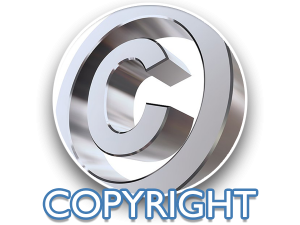PATENTS
A patent is a monopoly or an exclusive right granted for a specified period of time by the State to an inventor, or to another person, in exchange for a full disclosure of the invention to the public.This monopoly entitles an Applicant, within the territory of the Republic, to exclude any third party from making, using, disposing or offering to dispose of, or importing the invention for the specified period. The full disclose of the invention is made in a specification which includes written claims which define the scope of the protection.
HOW LONG IS A PATENT VALID?
A patent is valid for twenty years from the date one which a complete patent specification (which includes a set of claims) have been filed at the South African Patent Office. Renewal fees are due and payable to maintain the patent, which renewal fees are generally applicable and payable from the third anniversary of the patent.
WHAT IS PATENTABLE?
The Act excludes/prohibits the patenting of certain invention. This includes:
- Mathematically methods;
- Aesthetic creations (for instance, fashion designs, motor vehicles designs etc);
- Architectural designs;
- Schemes, for example, investment or insurance schemes;
- Business methods;
- Rules for playing games (the games equipment may be patentable);
- Computer programs; and
- Scientific theories (for example, Einstein’s Relativity Theory).
ARE THERE ANY REQUIREMENTS?
In order for an invention to be patentable, it must be novel, inventive and must be capable of being applied in the trade.
– Novelty

An invention is deemed to be novel, if it is new. This entails that it should not have been know to the public anywhere in the world – by mouth, by use, in any printed publication, or in any other way – before the date of first application is made.
To destroy novelty, a description of the invention must have been made in sufficient detail to enable it to be properly understood by a person skilled in the art.
It would be appreciated that it is virtually impossible to conduct searches of all that is known to the public, and due to the huge costs generally associated with conducting these types of searches, it is more time and cost effective to file a patent application immediately without the necessary searches. However in some instances it may be advisable to conduct a search, especially when filing foreign application, as same may be very costly. In said instance, the costs of conducting a search may be justified, BUT an Applicant should always be mindful that one is not able to search ALL that is available to the public in especially printed form.
– Inventiveness

The invention must not be obvious to a person skilled in the art, prior to the filing date having regard to the prior art available immediately before the filing date.
This is most likely one of the biggest obstacles an Applicant faces and in many instance have been cited as a ground for the revocation of a patent.
The question of “obviousness” is one of fact, and is almost always determined by a Court after considering expert evidence attested to by both the Applicant and Respondent.
– Utility
This is generally an easy requirement and in many instance are trifling. It is required that the invention should be able to be used and applied in the trade and industry. For example, if it is required that 50% of the rainforest is to be demolished to manufacture a small quantity of a element to be used in medicines, a patent would not be allowed.
HOW TO APPLY?
In South Africa there are basically only one type of patent which may be filed in two separate stages. The first stage is referred to as a “Provisional Patent Application” and the second stage a “Complete Patent Application”.
– Provisional Patent Applications
A provisional patent application is primarily filed to allow an Applicant to “fine tune” the invention, despite any consequent disclosure or commercial use, without forfeiting any rights to the patent protection.
An Applicant is allowed 12 months from the date of filing the Provisional Application to file a Complete Application.
– Complete Applications

A complete application differs from the Provisional Application, in that it includes a set of claims which defines the scope of the protection afforded to an Applicant.
Another important difference is that a Complete Patent must be filed by a registered patent attorney whereas an Applicant may file a provisional application personally. However, great care should be taken, as the patent attorney can only protect what has been disclosed in the provisional specification and hence if a mistake has been made, the Applicant may generally not obtain sufficient protection.








